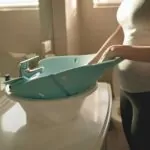How To Use Electric Toothbrush For Kids?

Navigating the world of kids’ oral hygiene can be a complex journey, especially in an era where technology increasingly intersects with our daily routines. Many parents find themselves at a crossroads, pondering questions like “Should kids use electric toothbrushes?” or “How can I teach my child to use an electric toothbrush effectively?” These questions are not just about dental health; they reflect a deeper concern for instilling lifelong healthy habits in children.
This comprehensive guide is designed to demystify how to use electric toothbrush for kids. It’s more than just a how-to manual; it’s a resource for parents seeking to make informed decisions about their child’s oral health. We understand that transitioning from traditional to electric toothbrushes can be a significant shift for both children and parents.
1 The Benefits of Electric Toothbrushes for Kids
Why Can Kids Use Electric Toothbrushes?
- Superior Plaque Removal: Numerous studies have underscored the efficacy of electric toothbrushes in removing plaque. This enhanced cleaning capability is particularly beneficial for children, who are often more prone to cavities due to inconsistent brushing habits. By using an electric toothbrush, kids can achieve a level of cleanliness that might be difficult with manual brushing.
- Ease of Use for Children with Limited Dexterity: Children who are still developing their motor skills often find it challenging to master the correct brushing technique. Electric toothbrushes simplify this process, making it easier for kids to clean their teeth effectively. This ease of use is especially helpful for children with physical challenges or coordination difficulties.
- Built-in Timers: A key feature of many electric toothbrushes is the built-in timer, ensuring that children brush for the full two minutes recommended by dentists. This helps instil good brushing habits from an early age, promoting a thorough and consistent cleaning routine.

Addressing Safety and Efficacy
Pressure Sensors: Advanced electric toothbrush models come equipped with pressure sensors. These sensors play a crucial role in safeguarding young, sensitive gums from excessive brushing force, which can lead to gum recession or damage over time.
Customization Options: The availability of various brush heads and adjustable power settings allows parents to tailor the brushing experience to their child’s specific needs. This customization is essential for catering to different ages, dental sensitivities, and stages of oral development.
2 How to Use Electric Toothbrush for Kids?
Choosing the Right Toothbrush
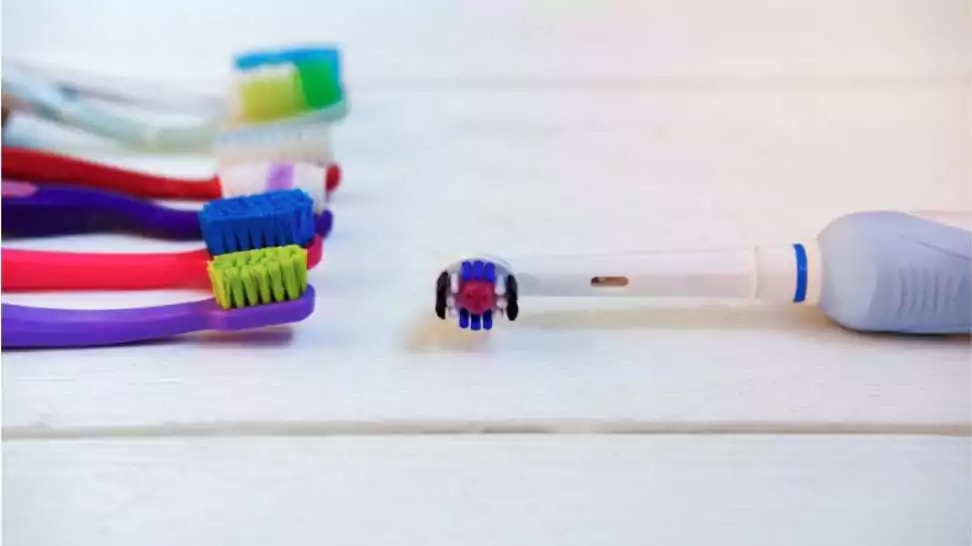
- Ergonomic Handles: When selecting an electric toothbrush for a child, it’s important to consider the handle’s design. Ergonomically designed handles, which are easy for small hands to grip, can make brushing more comfortable and effective.
- Rechargeable vs. Battery-Operated: The choice between rechargeable and battery-operated toothbrushes often comes down to convenience and preference. Rechargeable models are eco-friendly and cost-effective over time, while battery-operated ones might be more suitable for travel or occasional use.
Teaching the Basics
- Practice Sessions: Introduce your child to their electric toothbrush by allowing them to hold and explore it without toothpaste first. These practice sessions are key to getting them accustomed to the new sensation and sound of an electric brush.
- Educational Resources: Utilise engaging books, videos, or apps about dental hygiene to make the learning process more interactive and fun. There are numerous child-friendly resources available that can turn tooth brushing into an exciting and educational activity.
Brushing Technique
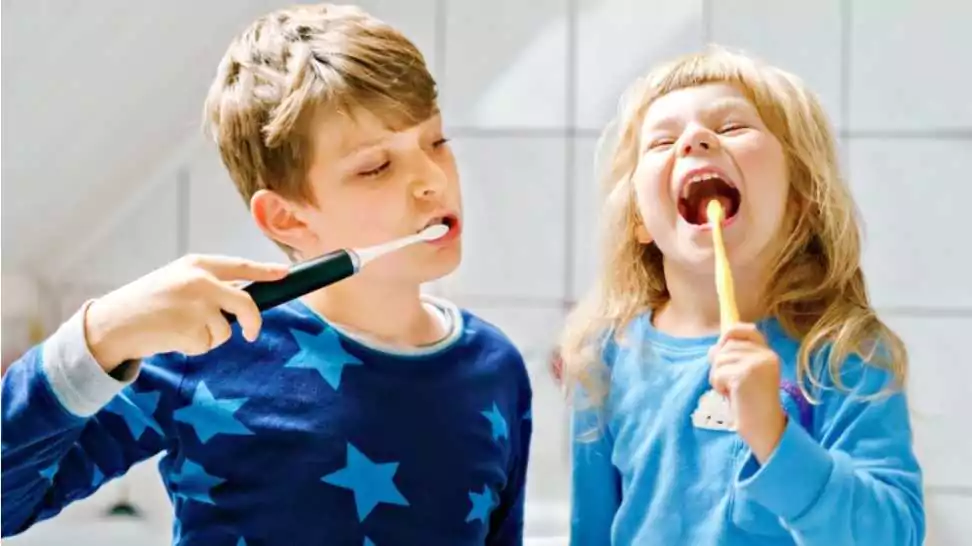
- Tilt at a 45-Degree Angle: Educate your child about the importance of angling the brush at 45 degrees towards the gum line. This technique is crucial for effectively cleaning the gums and the spaces between teeth.
- Focus on Each Quadrant: Guide your child to spend about 30 seconds on each quadrant of their mouth, ensuring a comprehensive clean. Some electric toothbrushes have quadrant timers, which signal when it’s time to move to the next section.
- Don’t Forget the Tongue: Encourage your child to gently brush their tongue. This practice not only helps in removing bacteria but also aids in maintaining fresh breath.
After Brushing
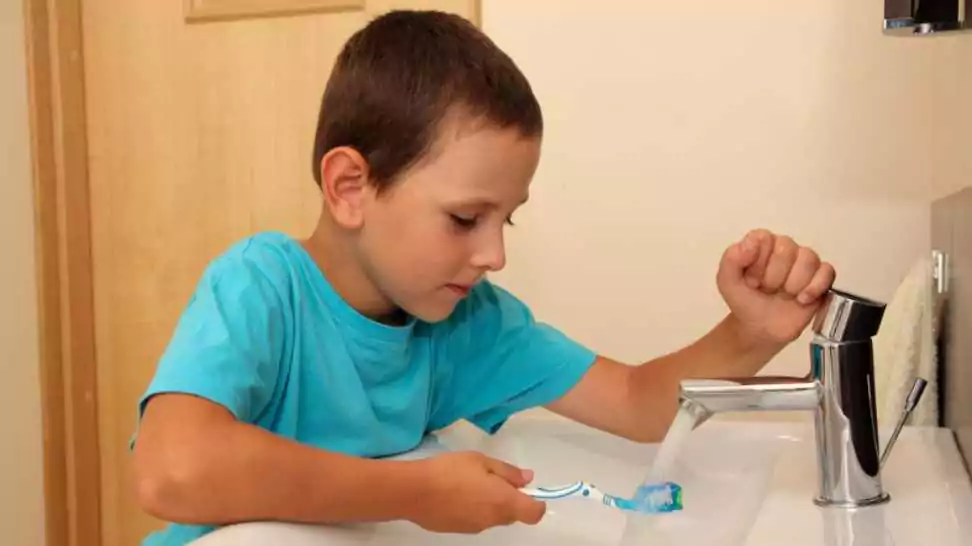
Regular Replacement of Brush Heads: Emphasise the importance of changing the brush head every three months, or sooner if the bristles appear worn out. Regular replacement is crucial for maintaining the effectiveness of the toothbrush.
Hygiene Practices: Teach your child to rinse their toothbrush thoroughly after each use and store it upright in an open space. This practice prevents bacterial growth and contamination, ensuring the toothbrush remains hygienic for each use.
3 Common Concerns and Tips
When to Start Using an Electric Toothbrush?
Consult Your Dentist: While electric toothbrushes are generally safe for children, it’s always prudent to seek personalised advice from your child’s dentist. The dentist can offer guidance based on your child’s specific dental needs, age, and development stage. They can also provide tips on the type of electric toothbrush that would be most suitable, considering factors like gum sensitivity and the presence of braces or other dental work.
Overcoming Fear of Reluctance
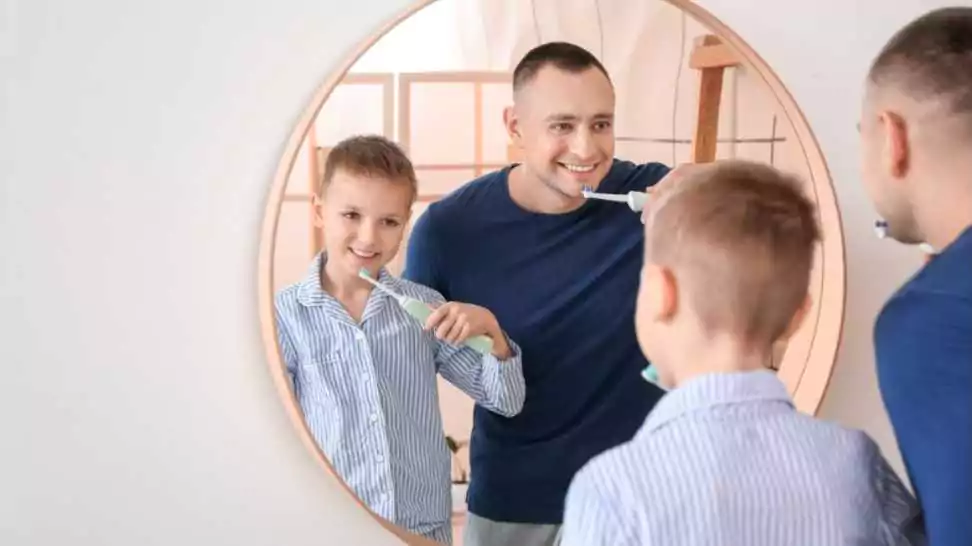
- Brushing Together: Turning toothbrushing into a family activity can be a great way to model good oral hygiene habits for your child. When children see their parents or siblings using electric toothbrushes, it normalises the experience and can reduce any apprehension they might feel. Plus, this can be a fun bonding time for the family, setting a positive tone for the day or night.
- Reward Systems: To encourage regular brushing, consider implementing a reward chart or system. This could involve stickers, stars, or a points system where consistent brushing earns small rewards. The key is to make these rewards motivational and age-appropriate, ensuring that your child feels excited and proud of their oral hygiene achievements.
4 Wrapping Up
In conclusion, electric toothbrushes offer a multitude of benefits for enhancing children’s dental hygiene. By understanding how to effectively use these tools and selecting the right product for your child, you lay the groundwork for a lifetime of healthy oral habits. The transition to electric toothbrushes, when done with proper guidance and positive reinforcement, can transform a mundane task into an enjoyable and effective routine for children.
Moreover, incorporating electric toothbrushes into your child’s oral care routine prepares them for a future where technology and health intersect. It’s an opportunity to teach them about the importance of embracing new tools and methods for better health outcomes. By making this switch, parents can help their children build a strong foundation for dental hygiene, setting them on a path to a healthier, happier smile.
Community Q&A
About This Article
This article has been viewed 113 times.



